Background:
This post continues to look at the performance of the Blaze ATOM Race V2 intake. The pre-turbocharger air temperature using the Blaze intake is measured and compared with three other aftermarket intakes.
Test Setup:
With other intakes that use a turbo inlet elbow the pre-turbo intake air temperature is measured using a temperature probe that is inserted into the elbow near the PCV port.
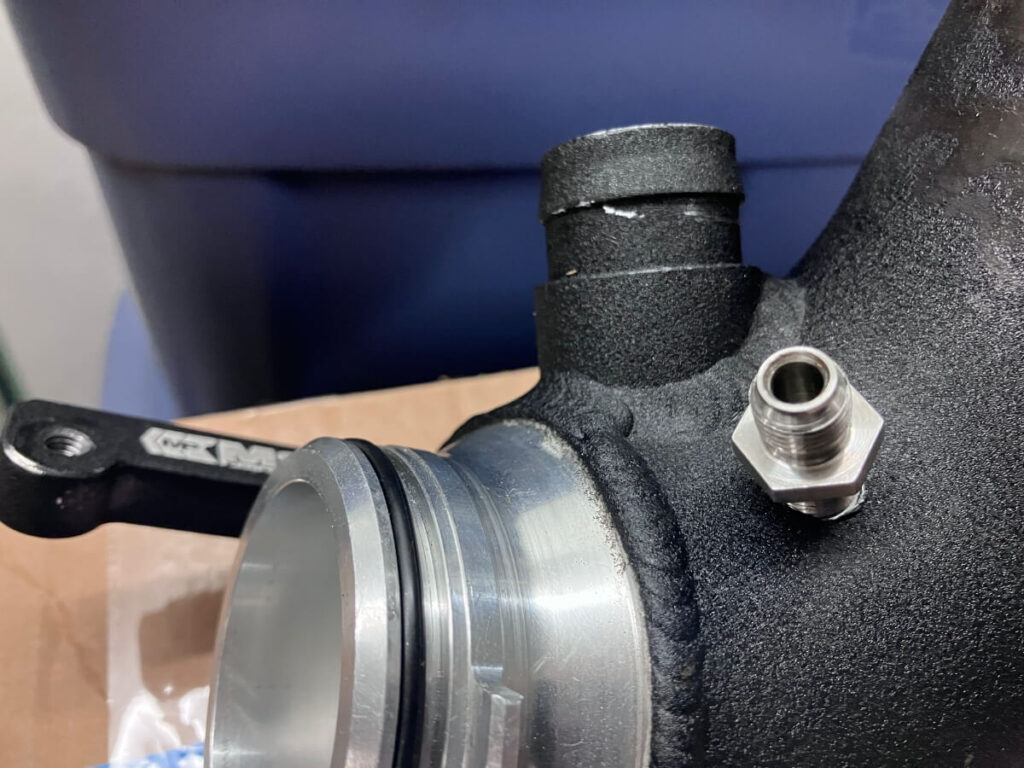
The Blaze ATOM Race does not use an inlet elbow, instead extending the length of the turbo inlet hose and using a turbo inlet flange to attach the inlet hose to the compressor.
To measure the intake air temperature inside the Blaze ATOM intake an adapter was made to fit into the PCV port that will accept the temperature probe.
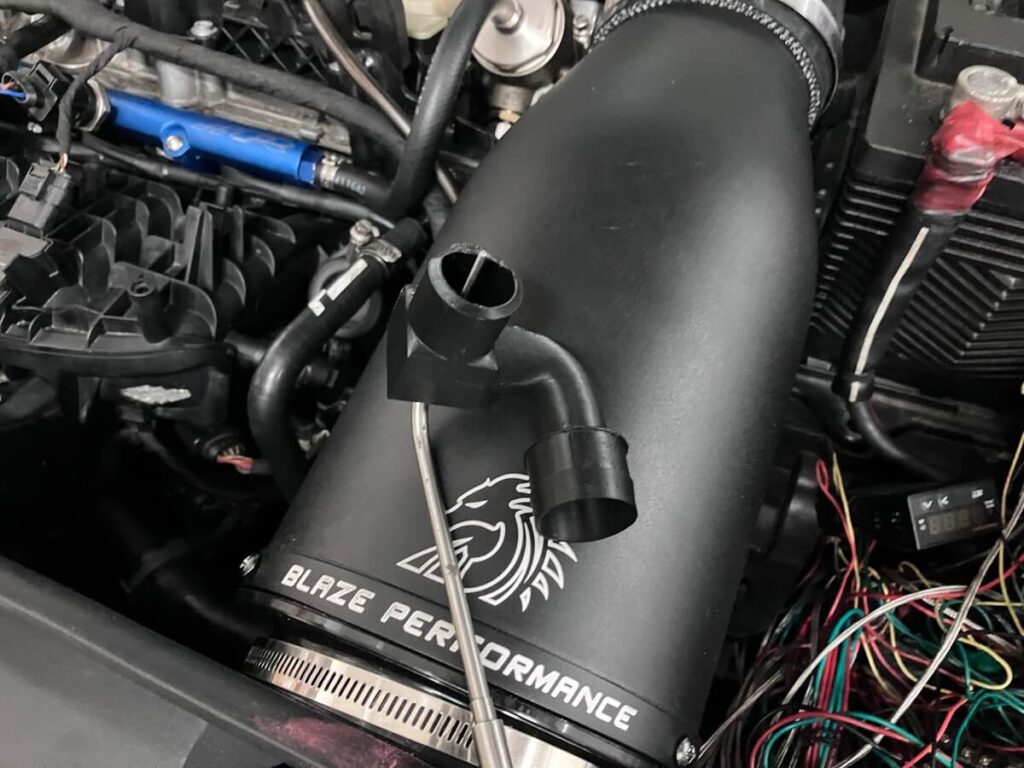
The PCV port end of the adapter is capped and the PCV hose is left to vent to the atmosphere so that air from the engine does not influence the temperature reading.
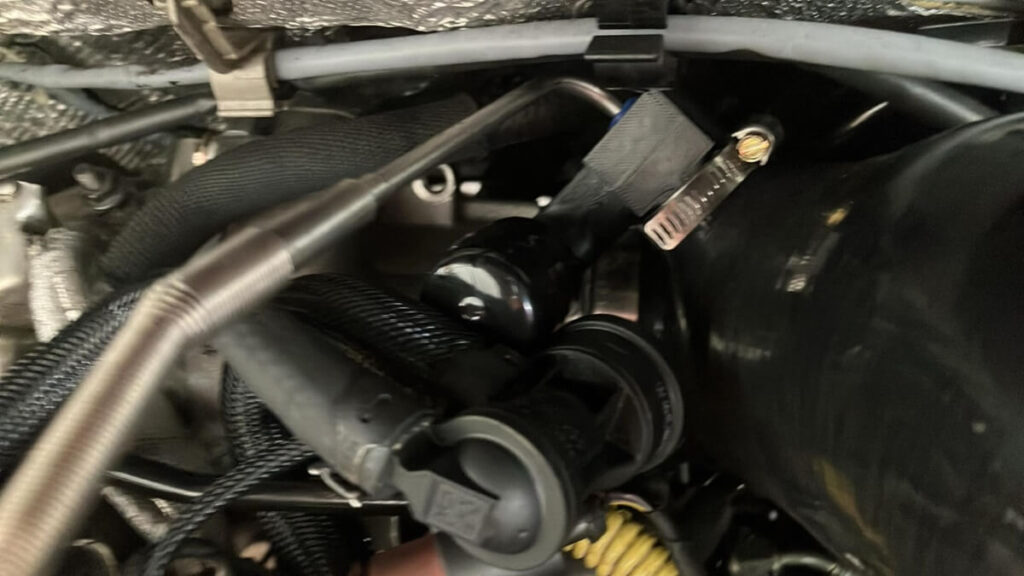
With the temperature probe installed inside the inlet hose, the GTI is driven on the street to record the temperature during a series of third-gear full-throttle pulls.
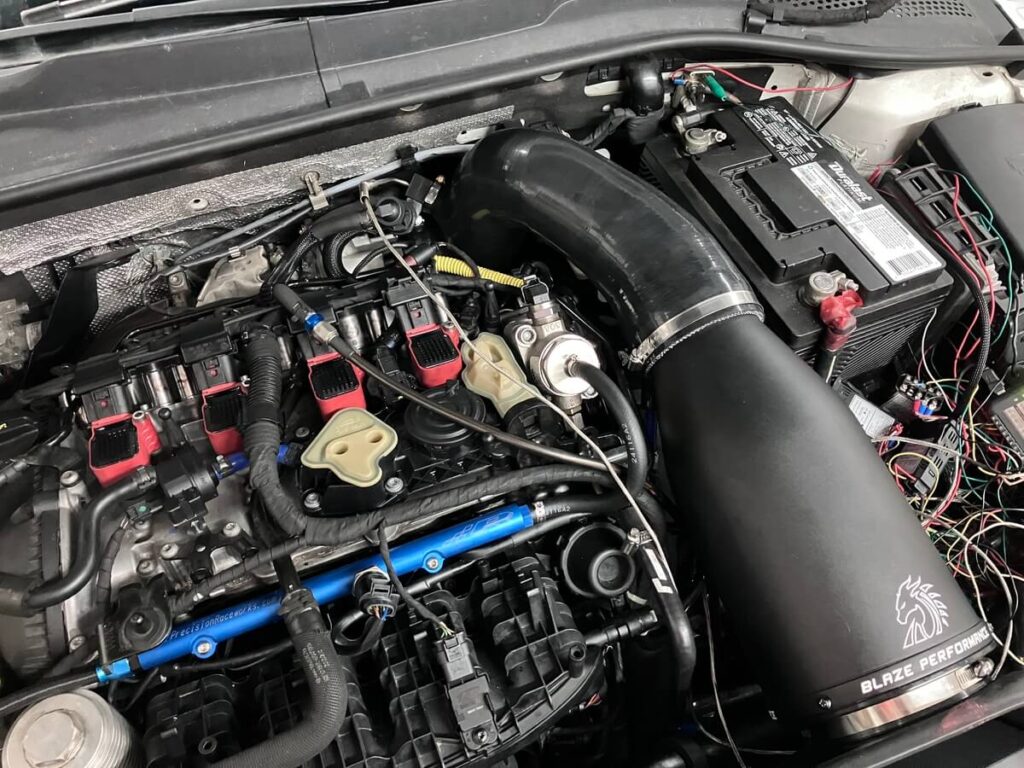
Previously the same test was done using the Integrated Engineering V2 intake:
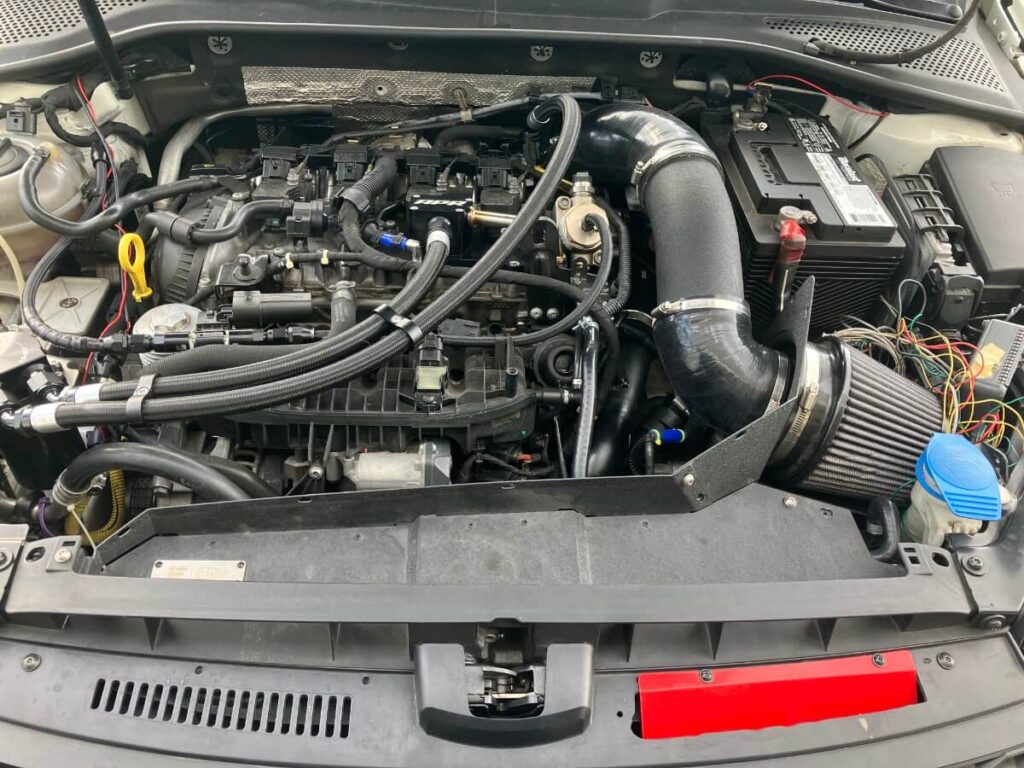
The APR Pex intake:

The Eventuri intake:
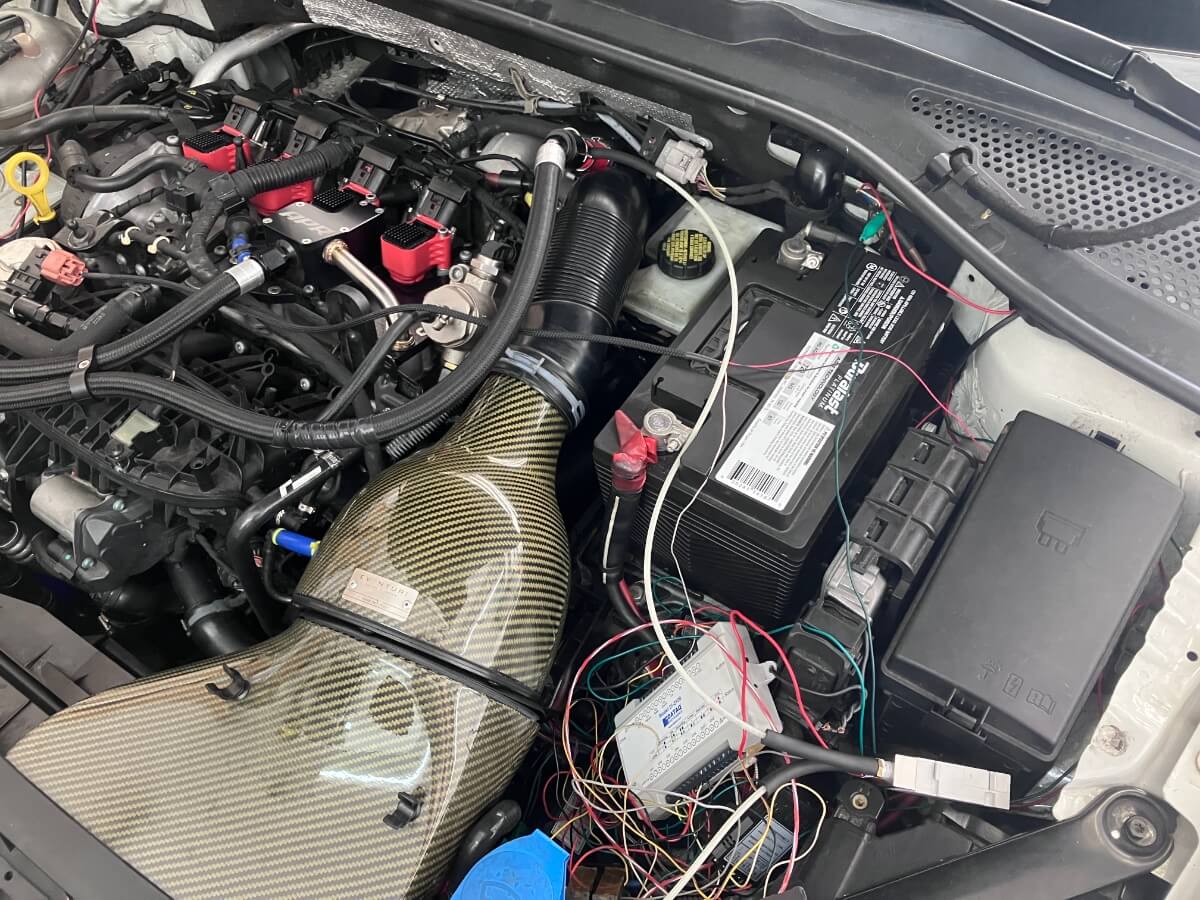
The results using the Blaze ATOM Race V2 will be compared with these other aftermarket intakes.
Data that will be used in the comparison is the air temperature inside the inlet hose at the beginning of a pull versus the outside air temperature. This is identified as Start-OAT.
The change in the air temperature during the pull will be calculated and is referred to as Rise.
Note: Rise can be negative, which would correspond with a lower air temperature at the end of the pull compared to the starting temperature.
The air temperature in the inlet hose at the end of the pull compared to the outside air temperature is identified as the Finish-OAT.
Test Results:
The following chart shows an overview of the segment of the data collection session where the full-throttle pulls were made.
PCV Port is the air temperature reading inside the inlet hose.
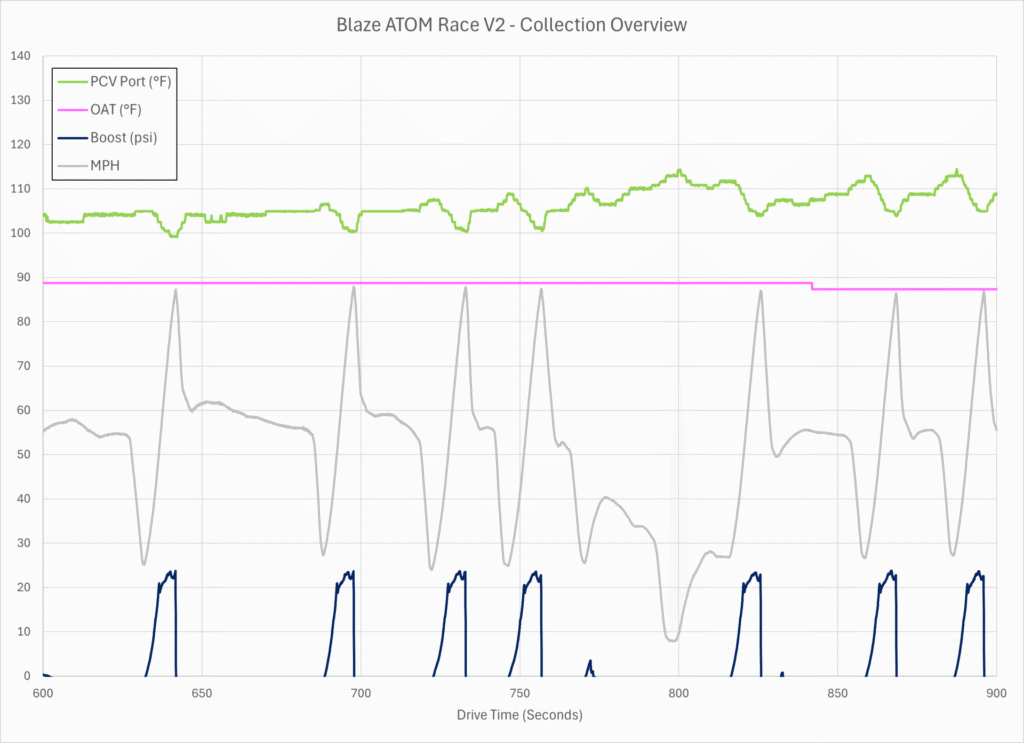
A comparison of the tested intake starting air temperature over the outside temperature is shown on this chart:
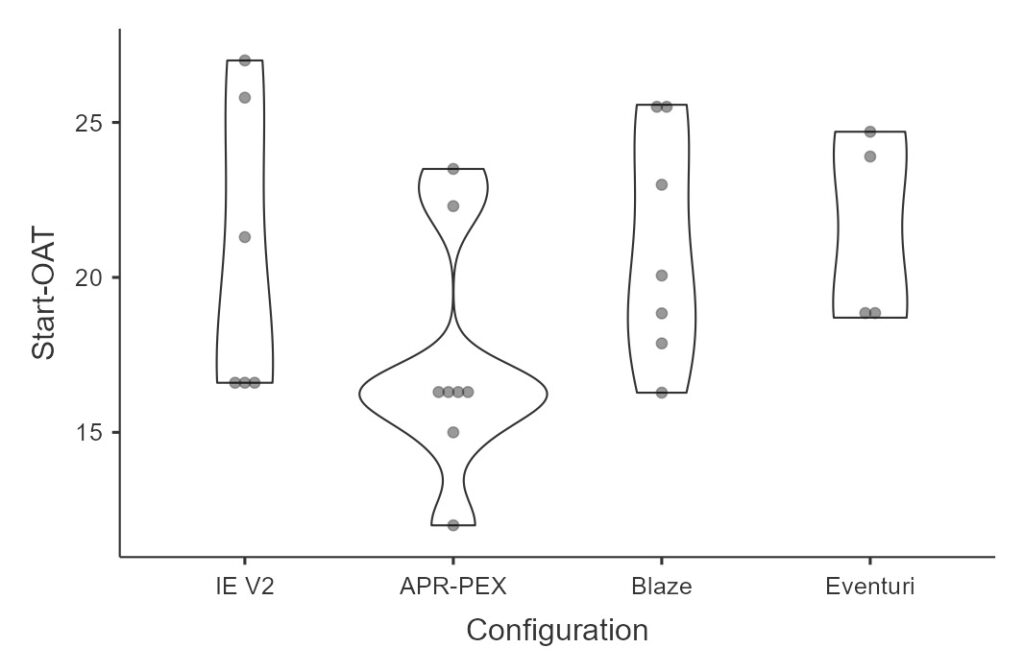
The gray circles are the individual data points.
All the intakes show an air temperature higher than the outside air temperature at the start of the pulls.
The next chart shows the rise or fall of the air temperature during the pull:
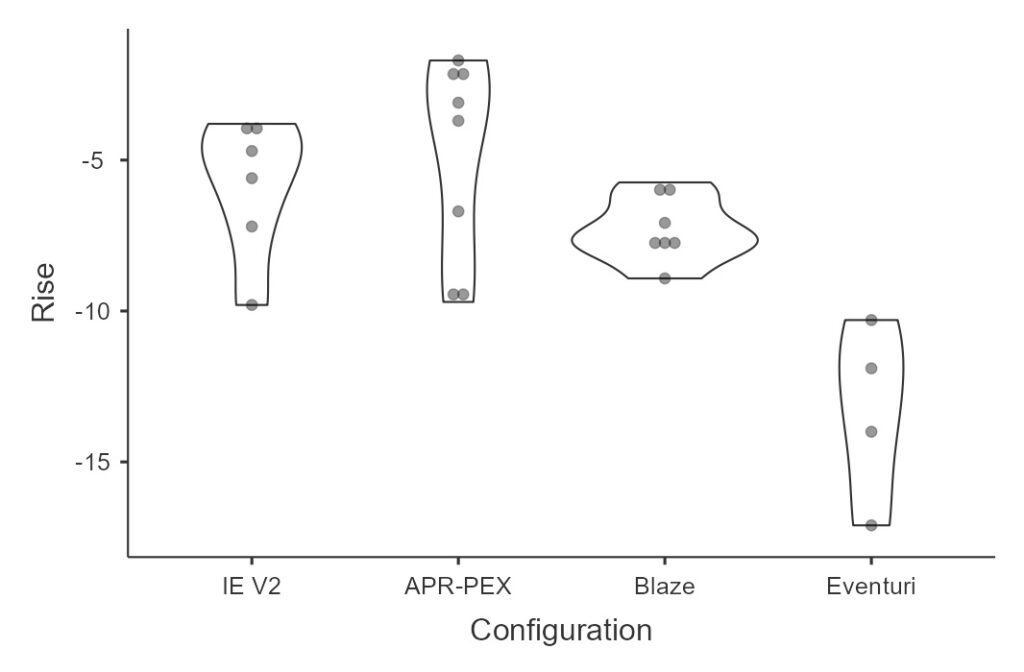
All of the intakes show a drop in air temperature during the pulls with the Eventuri closed intake showing the largest drop.
The next chart shows the air temperature at the end of the pull compared with the outside air temperature:
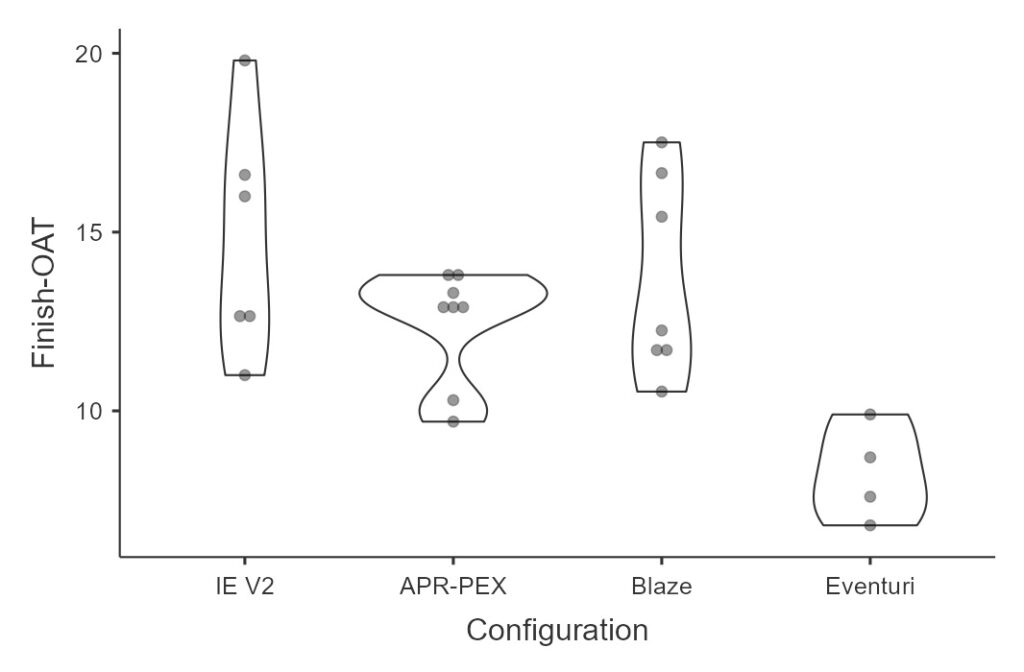
The larger drop in air temperature when using the Eventuri results in a lower final temperature.
The mean Finish-OAT from the chart above for the intakes is shown in the table:

Conclusions:
The pre-turbocharger air temperature was measured using the Blaze ATOM Race V2 intake and compared with similar data using three alternate aftermarket intakes.
Results with the Blaze ATOM Race V2 were similar to those recorded using the IE V2 and APR Pex intakes.
The Eventuri intake showed a slightly greater temperature drop during the testing compared to the other three intakes which resulted in a lower final air temperature over the outside air temperature.
The Blaze ATOM Race V2 is a “mostly” closed intake and the temperature measurements recorded in this test were comparable with two “open” intakes.
Blaze “mostly” closed discussion:
The reason for referring to the Blaze ATOM as a “mostly” closed intake is due to the cutouts in the sheet metal duct.
As shown in the pictures below, slots are running along the duct outside the inlet area to the air filter.
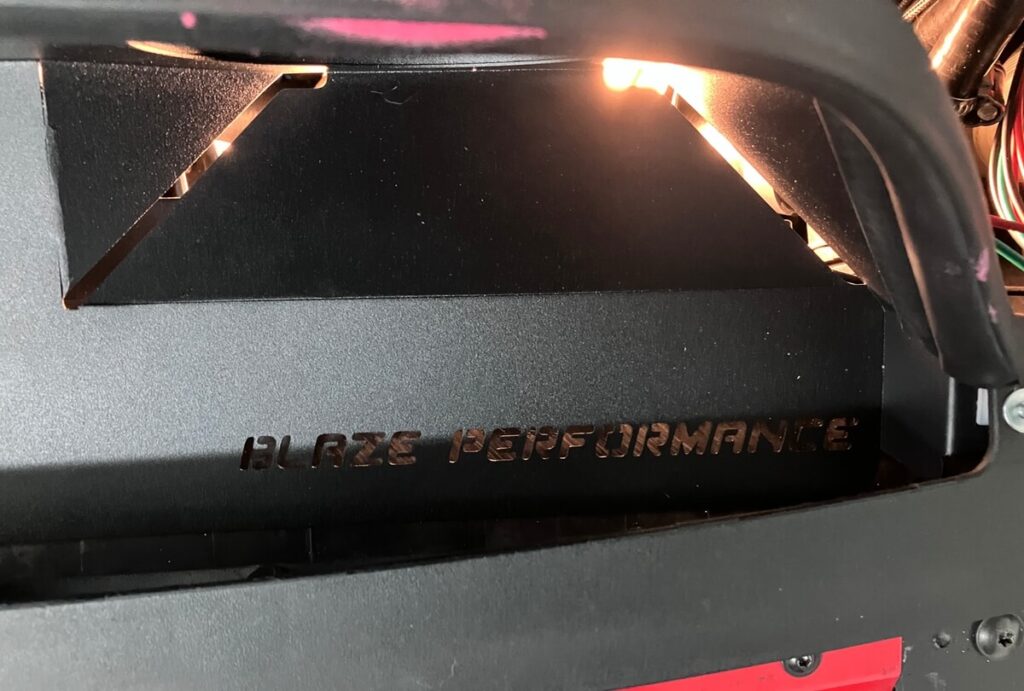
Also, the words BLAZE PERFORMANCE are stamped into the duct, creating more openings in front of the air filter inlet.
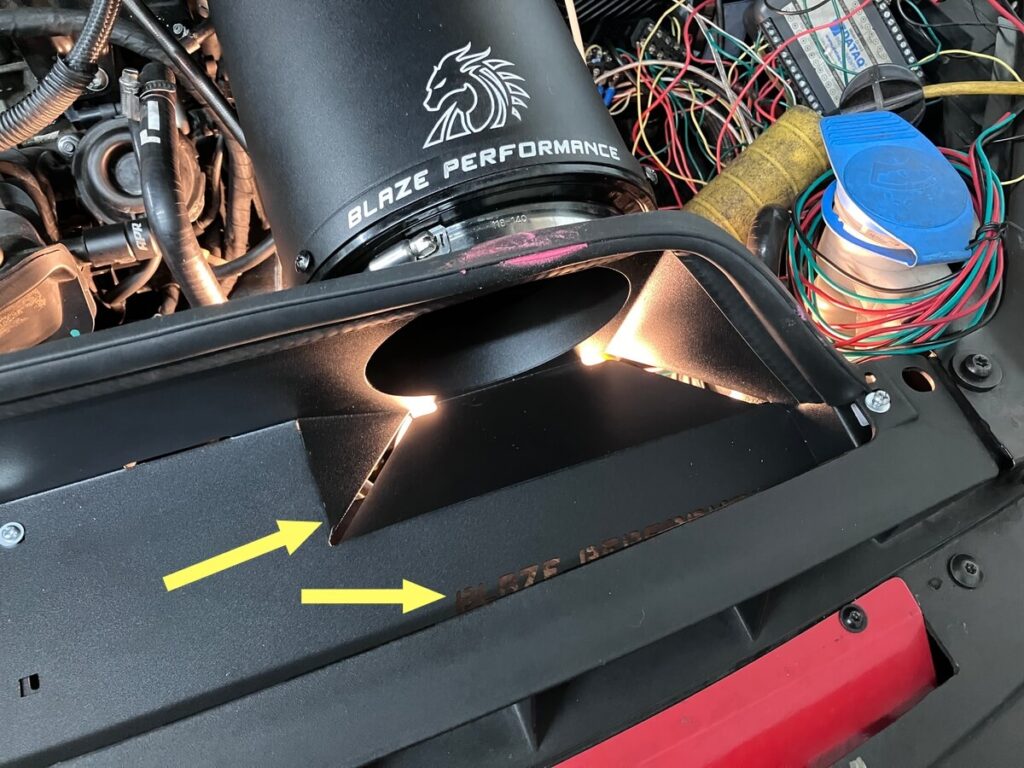
The placement of these cutouts is in the area where the largest vacuum would be found along the duct as the air filter inlet is where all of the air being fed to the engine is drawn into the intake.
These cutouts likely allow warmer engine compartment air to mix with the air being drawn in from outside the vehicle. This mixing of warmer and cooler air would raise the average air temperature.
